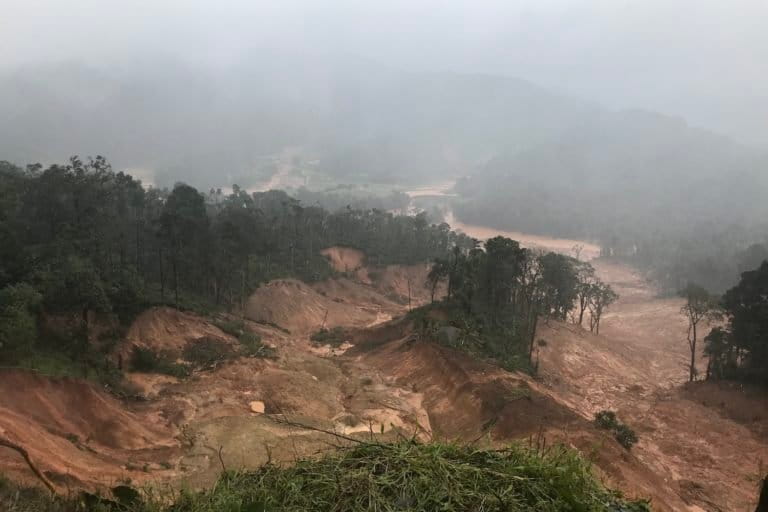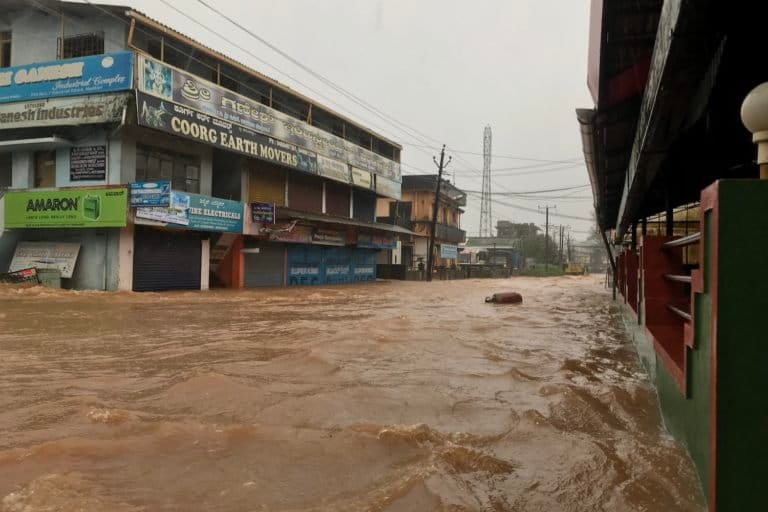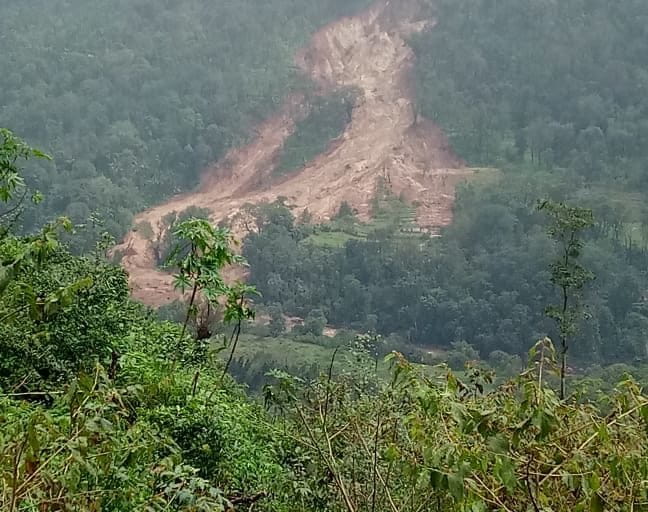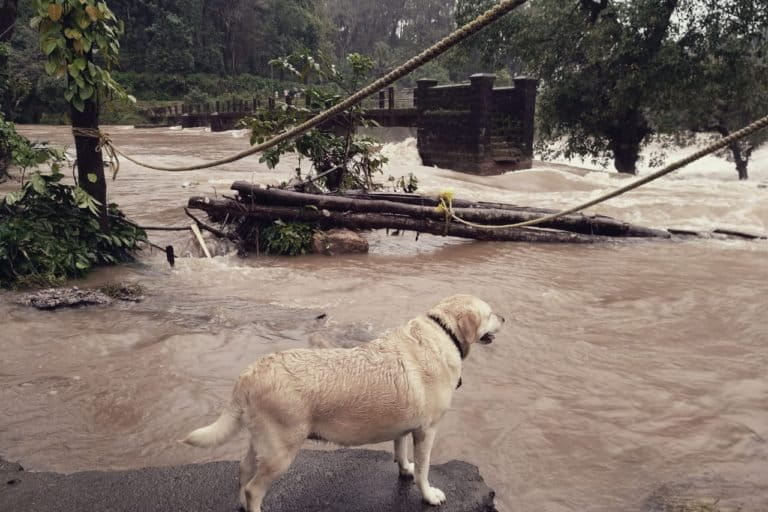- In mid-August this year, the district of Kodagu received 768 mm of rainfall. This is almost half of the entire rainfall received in the month of August, which was 1,675 mm.
- The rainfall recorded in August 2018 broke all records in living memory — it was back in 1931 that Kodagu had last received such heavy rainfall.
- The key to rebuilding in Kodagu is to make sure ecological considerations are understood and ecological guidelines adhered to.
Heavy, incessant rainfall is a fact of life for the people of Kodagu (the erstwhile Coorg district) in Karnataka. “For the old timers here in Coorg, the last few months of rain was nothing new. None of us were really expecting such incredible damage to happen though,” said Pavita Subbaiah, a resident of Madikeri. Subbaiah and her husband had shifted back to Kodagu five years ago, after he had retired from his job at Bengaluru. She added, “Everyone thinks the reason for all this damage and loss of life is the buildings that have come up everywhere and the constant use of earthmovers and drillers. A fragile region like ours just cannot take that much pressure.”

The district of Kodagu is indeed used to heavy rains, especially when the Southwest monsoons traverses over Kodagu during its journey across the Indian subcontinent. Thus, when heavy rains battered the region in June this year and continued over the next few months, there was an apprehension about loss of good coffee crop (Karnataka grows more than 50 percent of India’s coffee) but no one was thinking of extensive damage, lesser still about entire villages being consumed by landslides. It was the mid-August rains that began on Independence Day, August 15, and continued unabated till August 17 that broke the levee, quite literally.

Over the course of three days, August 15, 16 and 17, the district of Kodagu received 768 mm of rainfall. This is almost half of the entire rainfall received in the month of August, which was 1,675 mm. The rainfall recorded in August 2018 broke all records in living memory — it was back in 1931 that Kodagu had last received such heavy rainfall. Even then, August 1931 had recorded 1,559 mm of rainfall. The fact that this time most of the rain fell over a period of 72 hours made things worse.
The higher altitude towns and villages in the region just couldn’t handle the rains. A third of all the panchayats in Kodagu were critically affected. At least 14 people were reported dead, more than 5,000 people were in rescue camps in the first few days after the rains, crop damages alone was estimated to be more than Rs. 3 billion (Rs. 300 crore).
A few villages in the worst affected municipalities, Kushalnagar and Madikeri, have been completely submerged by landslides with no traces left of their homes or farmland.

Aggravating the damage
Kodagu is a region most famous for its coffee beans, martial prowess and, of course, for being the birthplace of the Cauvery— the river that is the lifeline for millions of farmers in Tamil Nadu and Karnataka. The district varies in altitude from 390 metres above mean sea level (MSL) up to 1,750 metres above MSL. Over the last decade or so, Kodagu has also seen a great inflow of tourists, with city slickers from Bengaluru and other urban centres driving down for weekend holidays. The number of home stays in Kodagu has mushroomed to keep up with the tourists and as of now, every other coffee estate in the region doubles up as a home stay.
A senior forest official in Karnataka who declined to be named said that excessive tourism is detrimental to the environment but also argued that other underlying factors are not even discussed. “In line with the global trend of deforestation and forest degradation, much forest area (mostly government lands) came under coffee cultivation in the last three decades in Kodagu,” he said. “The governance was under tremendous pressure towards facilitating development. There was no stopping this trend as the priority of governance was not in regulating and containing encroachments or unbridled development but to regularise and promote it.”
The official added, “Since coffee cultivation is under shade of trees, deforestation was less visible to satellite imagery and less visually arresting. The landslides have primarily happened in the revenue villages of Mukkodlu, Galibeedu, Kalur, Monnangeri and Madapur. These are some of the areas that have been recently deforested. Deforestation in Kodagu is cryptic and happens below the radar. The landscape remains green and the canopy cover shows little change, but the land below changes significantly.”

According to the Coffee Board of India, Kodagu accounts for 1,07,089 hectares of the 2,44,785 hectares of coffee plantations in Karnataka, the state which accounts for over 53 percent of India’s coffee production. Thus, if this deforestation is a reality, it is happening at an overwhelming scale.
“People have been building tanks, making vertical cuts on the mountains, chopping trees on the road sides, so while I feel the disaster is not entirely man-made, at least not knowingly made, it is a significant factor,” said Thamoo Poovaiah of the Kodagu Ekikarana Samithi, an environmental group based in the region. Poovaiah and his colleagues are surveying all the disaster-hit towns and villages and accounting for the damage of both life and property. He adds, “There are many who we meet who have fear in their eyes and don’t want to go back to their villages. They want complete relocation. They feel that even if they go back they cannot cultivate.”
Rebuilding sensibly
All the talk and focus in Kodagu right now is about getting the district back on its feet. The region is still reeling from the disaster with 25 relief camps acting as temporary homes to about 3,000 victims. At least five people are missing and the search is still on for them. The state electricity board is trying to get their services up and running but heavy landslides and damages to arterial roads is proving to be a major impediment.

“This region has not seen nature’s fury like this in recent times,” Prashanth Kumar Mishra, chief executive officer, Kodagu Zila Panchayat told Mongabay-India. “It is next to impossible to be fully prepared for something like this. Having said that, right now we’re trying to get people back to their homes, get the essential services up and running.”
He added, “Right now, we’re identifying sites which are relatively flat, in non-vulnerable locations and can be used to rehabilitate people. After the immediate work is over, the need will be to study the region and its environmental vulnerabilities and make recommendations to the district administration with regards to future development.”
As Kodagu recovers, there is talk about reviving the recommendations made by committees such as the Western Ghats Ecology Expert Panel (Popularly known as the Gadgil committee report). The National Green Tribunal (NGT) has directed the Ministry of Environment, Forests and Climate Change (MoEFCC) not to reduce the eco-sensitive area (ESA) of Western Ghats further from the proposed 56,825 sq kms and to notify the same within six months.

These are signs of acknowledging that anthropogenic activities should be reduced in regions such as Kodagu. Whether this will translate effectively on the ground is still questionable. As the senior forest official says, “Conservation is still a taboo word in politics and power circles. In fact, the rehabilitation of the families here is being planned in a forest land which would involve removal of many hundreds of trees. This is chosen because it’s the easiest option. Forests and environmental regulations are still only seen as an impediment to growth.”
He added, “The banks of the Cauvery needs to be freed of encroachments, government housing projects on some stream beds need to be evaluated again, there needs to be a regulation on tree felling specific to the district. Finally, people should be ready to accept past mistakes. If there is no acceptance, no progress can be made.”
Aerial view of devastation after Kodagu floods. Drone footage by Vinayak, Mallikarjun and Sudeep. Reproduced with permission.
Banner image: Excavating soil that has slipped down the slope in Kodagu. Photo by Prajna G.R.

